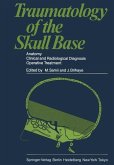The brain stem and cerebellum are structures that have fascinated and puzzled physicians, anatomists, and physio logists for centuries. Relatively small in volume compared to the much larger and more majestic human cerebrum, and hidden away in relative obscurity in the back of the head under the protection of the bony posterior fossa and the firm dural envelope, the tentorium cerebelli, these critical neural structures defied precise study during life until very recently. Recent advances in brain and vascular imaging and improved understanding of brain-stem reflex and tract functions and their measurement by electrophysiological techniques have presented an opportunity for clinicians and researchers to better study, during life, patients with stroke and other conditions that involve the brain stem and cere bellum. A congress was held at the Neurology Clinic of the University in Mainz, April 4-5, 1992, during which clinicians and researchers reported and discussed modern topical diagnosis of diseases of the brain stem and cere bellum. This volume represents the edited proceedings of that congress. Early information about brain stem anatomy and func tions came from anatomical studies by Ludwig Turk, Paul Flechsig, Rudolph von K6lliker, Karl Burdach, Vladimir Bekterew, and Benedikt Stilling, among others, all working in Germany during the middle years of the nineteenth century. Johann Reil, a German anatomist, in the begin ning of the nineteenth century had described the structure and some functions of the cerebellum which he called the little brain ("Kleinhirn").
Bitte wählen Sie Ihr Anliegen aus.
Rechnungen
Retourenschein anfordern
Bestellstatus
Storno









